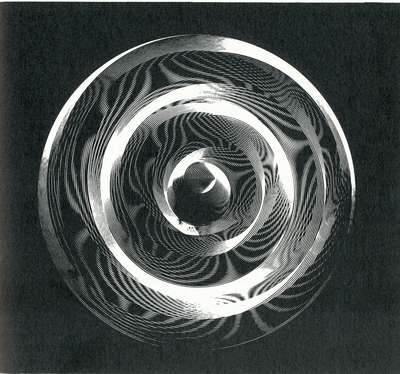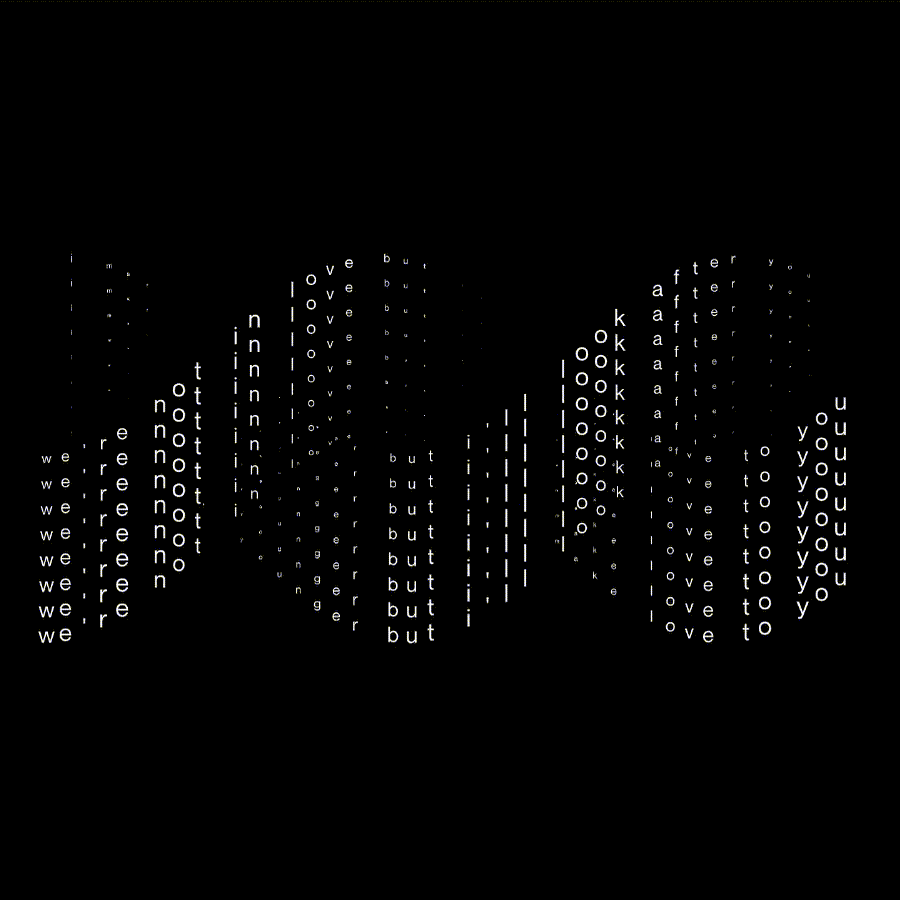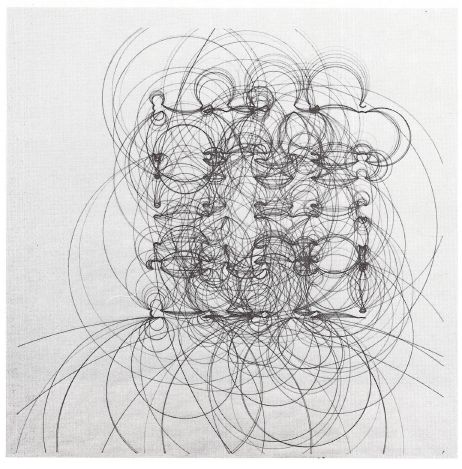Originally posted on Substack
“The programmer, like the poet, works only slightly removed from pure thought-stuff. He builds his castles in the air, from the air, creating by the exertion of the imagination.” - Frederick Brooks
Quick update:
Well its been 6 months of almost weekly newsletters and I am so excited of how much content and interest (~500 Substack subscribes) there has been! I’ve loved the interactions I’ve had with you all and will hope to continue to do so! Its been an amazing journey to see the passion and love being part of it.
And the journey has begun.
So I had mentioned in a couple of newsletters back that I wanted to start really understanding the historical context of generative/computer artists in the last 50 years. This has led me to walk through archives in the digital arts and I’ve come across an assortment of artists that I had not known existed. Take for example, Frank Boettger
Frank Boettger was trained as an electrician and attended the School of Engineering in Kaiserslautern. Since 1969, Boettger was employed in the computing department of the company Messerschmitt-Boelkow-Blohm (MBB) where he had the opportunity to do computer-aided drawings. On the initiative of Winfried Fischer – then head of the Press Department and cultural program at MBB

Family of Circles 2 - 1972
Though his work Family of Circles 2 could easily have been created today as a piece sold on the blockchain, (especially with the rise of NFT and the surge of digital art) his work is not known by many.
Which does make me ask the question, is it apparent that the work of the past can be revitalized and provide aesthetic pleasure? How much are we informed by the cultural context of its times to say something is pleasing to the eye?
We might say, well art is timeless and there are certain elements that we consistent.. but even as the following observation made about computer art…
Those few who used the computer as an artistic instrument were regarded as outsiders: with their freelance experiments they deviated from the solid ground of strictly defined tasks, but on the other hand, found no approval in artistic circles. - The New Visual Age: The Influence of Computer Graphics on Art and Society Leonardo, Vol. 18, No. 2, pp. 105-107, 1985.
We know that today that has started to really change. I think a good indicator of this is Christie’s auctioning Beeple in the high-end “art” world.
We need to give a nod and memorialize the “firsts” of a few generations earlier. Much of it might be geometrical, but the “first” generation is but a period of geometry.
As I continue reading and categorizing more of this history, I am excited to see if there are trends that we can discover through this short history of generative / computer art.
Inspirations
Generative Typography from Andreion de Castro




A personal project, exploring and experimenting with creative coding on a daily basis. Inspired by pop culture, I often use lyrics and movie references as the premise of my animations. As you will see when browsing through, I tend to work with more emotion and depth, translating into a slower motion. Combining traditional and modern mediums, constantly seeking what could be the future for design. While creative coding is a powerful tool, we have not seen its full potential. I believe this will rapidly change in the upcoming years as more creatives discover it’s capabilities.
You can also check out his work on Instagram
🖌️ Unconventional Media
Microbes Don’t Actually Look Like Anything
{{ youtube VBmzwM76V0o }}
The beauty of nature is that it is generative as well. Here you will find a very fascinating source of inspiration that comes from the real world and can provide some patterns to replicate in art as well.
📸 Generative Graphics
Generative and Discriminative Voxel Modeling with Convolutional Neural Networks

When working with three-dimensional data, choice of representation is key. We explore voxel-based models, and present evidence for the viability of voxellated representations in applications including shape modeling and object classification. Our key contributions are methods for training voxel-based variational autoencoders, a user interface for exploring the latent space learned by the autoencoder, and a deep convolutional neural network architecture for object classification. We address challenges unique to voxel-based representations, and empirically evaluate our models on the ModelNet benchmark, where we demonstrate a 51.5% relative improvement in the state of the art for object classification.
Here is a mix of generative and machine learning models in recognition of Voxel based 3D objects which is slightly different than most of the classification models used today that are based on depth. This is just a great paper to read through to provide inspiration for the technically minded artist.
🏛️ Exhibits / Installations

75,000 Futures & Unknown Pleasures
Some processes are only understood after they have ceased to function properly – or have collapsed. The international race of trading algorithms, usually invisible to laymen, came to light on May 6th 2010, in the form of a ‘flash crash’. The algorithmic sale of 75000 so-called “E-mini” futures triggered one of the most drastic drops in the history of the American stock market. Within minutes the market had recovered, but for the first time, high-frequency trading was linked to a stock market crash. Even though the event itself had only lasted a few minutes, numerous private and state actors were kept busy for three years to follow while trying to figure out the cause of this phenomenon.
There is something beautiful about linking algorithmic
🔖 Articles and Tutorials
COMPUTER GRASS IS NATURAL GRASS

Jeff and I have been making two-dimensional art for a long time. I’ve been making paintings and drawings since childhood and was educated as an artist. Jeff has been thinking what mathematicians think and writing it down since childhood and was educated as a mathematician and as an artist. In the 1960’s Jeff became involved with computers and their programming and with using the computer to help people solve their problems.
Colette and Charles Bangert

Colette and Charles J. Bangert (commonly known as Jeffery) are well-known for their works of algorithmic art, which they produced as a couple. Colette was trained as an artist, while her husband studied mathematics, and later, computer science and programming; the two combined their skills to join the ranks of early innovators within the field.
3d Tutorial | Stereographic Voronoi Sphere | Blender 2.8
{{ youtube 3vpDMNNjb8A }}
In this video, we will use the Extra Meshes addon, along with a few modeling and modifier adjustments to reproduce a very similar object in Blender 2.8.

Aaron Penne: Apparitions on Art Blocks
Apparitions is an exploration of the space between the algorithmic and organic. My goal as a generative artist is to create artwork that inspires curiosity, leading viewers to simultaneously see the work as computer generated and hand crafted, because it is both.
{{ youtube X-iSQQgOd1A }}
A small exploration of an algorithm inspired by ants, and some little experiments into simulating some of the behaviour of ants and slime moulds.
Courses
HTML5 Canvas Crash Course for Generative Art
{{ youtube Yvz_axxWG4Y }}
From HTML5 canvas basics to beautiful particle systems in one video. Do you want to master Front End Web Development this year? Then this tutorial is for you! :) We will go from important fundamentals to digital art, let me show you the real power of vanilla JavaScript in this HTML5 canvas crash course for beginners!
Books

Neri Oxman: Material Ecology
Throughout her 20-year career, Neri Oxman has invented not only new ideas for materials, buildings and construction processes, but also new frameworks for interdisciplinary―and interspecies―collaborations. She coined the term “material ecology” to describe her process of producing techniques and objects informed by the structural, systemic and aesthetic wisdom of nature, from the shells of crustaceans to the flow of human breathing.